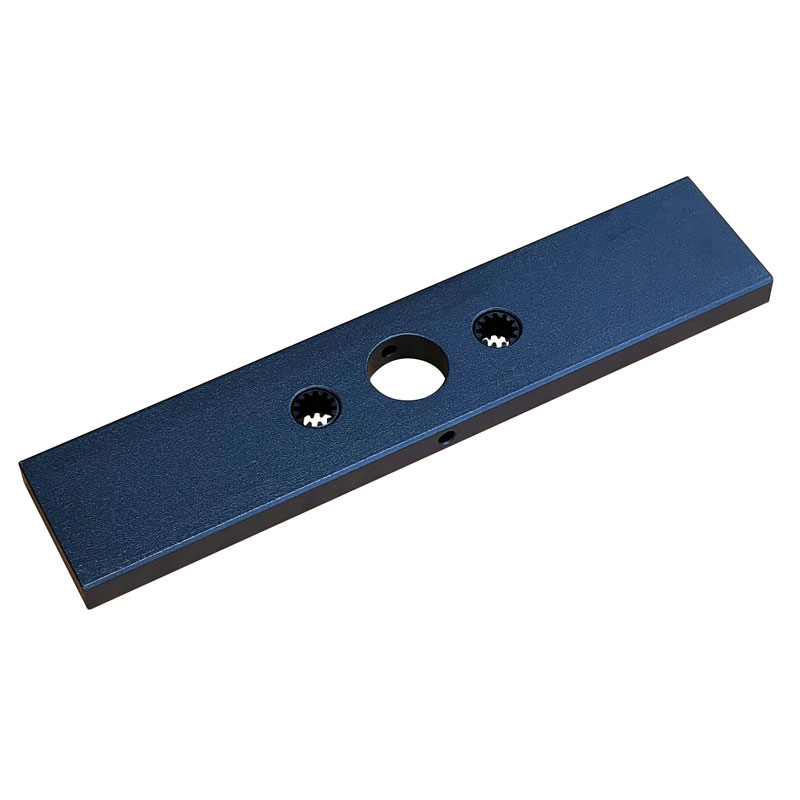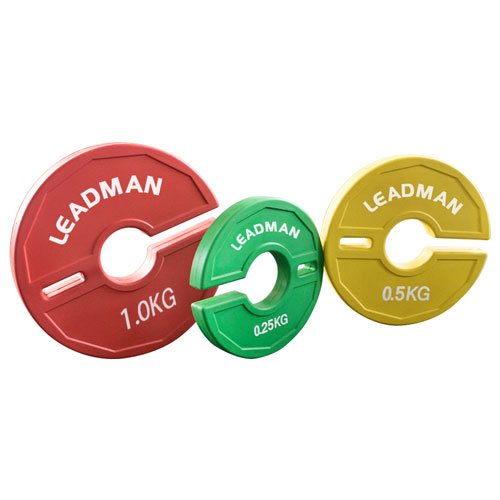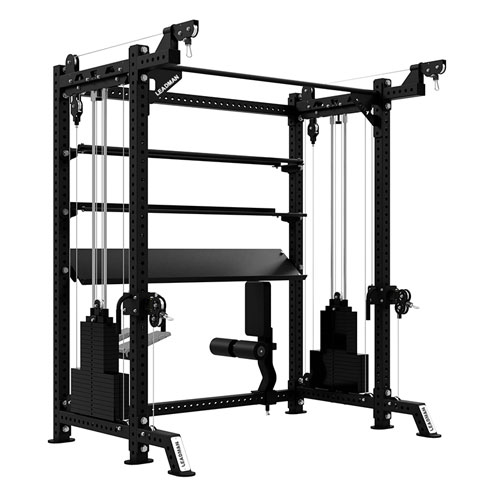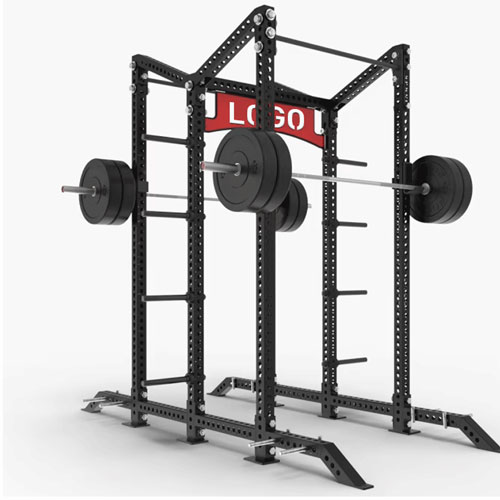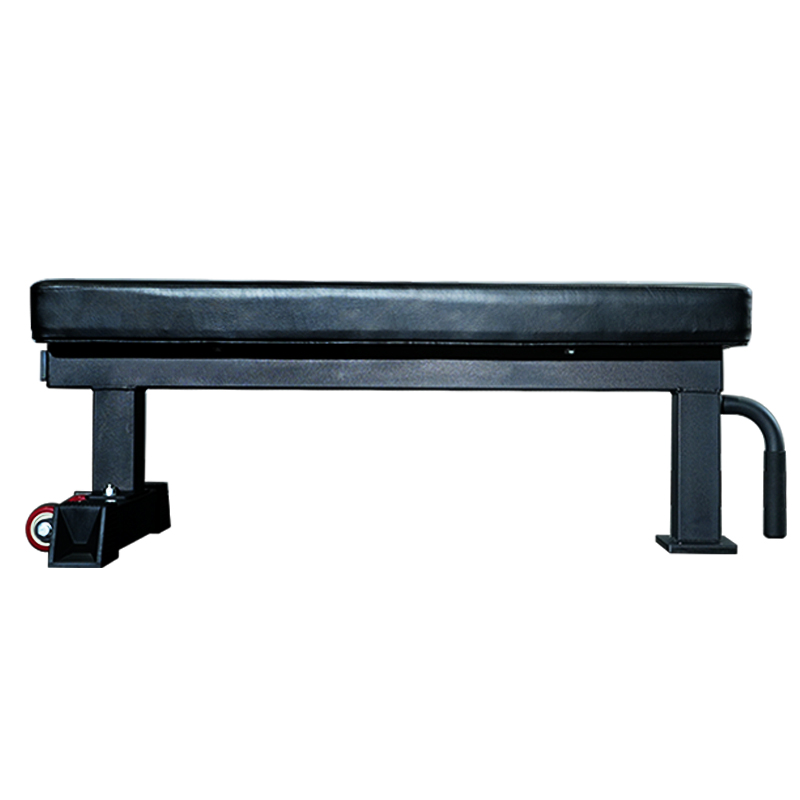The Role of Fitness Equipment in Injury Prevention
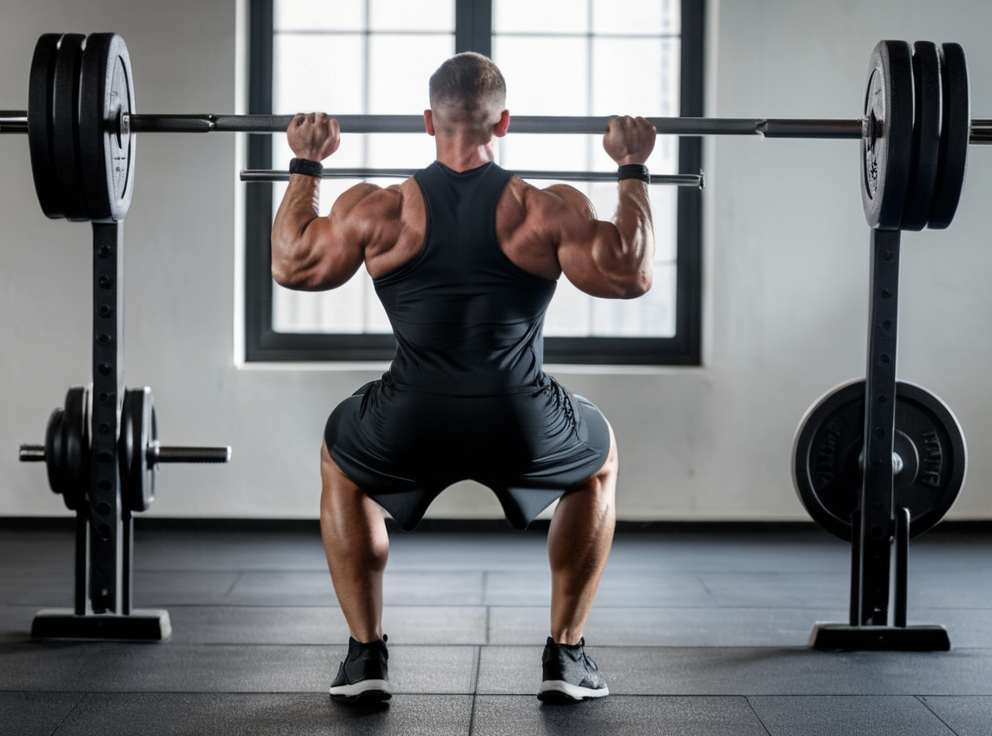
Physical activity is an essential part of a healthy lifestyle, but it also carries the risk of injuries. Injuries can range from mild strains and sprains to severe fractures and dislocations. Fitness equipment can play a crucial role in preventing these injuries by providing support, stability, and resistance. In this blog post, we will explore the various ways in which fitness equipment contributes to injury prevention.
Section 1: Types of Fitness Equipment for Injury Prevention
Fitness equipment comes in a wide variety of types, each with its own unique benefits for injury prevention. Here are some of the most common types:
- Cardio equipment: Cardio equipment, such as treadmills, ellipticals, and stationary bikes, helps improve cardiovascular health and endurance. By gradually increasing the intensity of cardio workouts, you can strengthen your heart and lungs, which in turn reduces the risk of chronic diseases such as heart disease and stroke. Cardio equipment also helps improve joint mobility and flexibility, which can help prevent injuries.
- Strength training equipment: Strength training equipment, such as weights, resistance bands, and weight machines, helps build muscle strength and endurance. Strong muscles help support and stabilize joints, which reduces the risk of sprains, strains, and other injuries. Strength training also helps improve bone density, which can help prevent osteoporosis and fractures.
- Balance equipment: Balance equipment, such as balance boards, wobble cushions, and Bosu balls, helps improve balance and coordination. Good balance and coordination are essential for preventing falls, which are a common cause of injuries, especially among older adults.
- Flexibility equipment: Flexibility equipment, such as mats, foam rollers, and stretching straps, helps improve flexibility and range of motion. Flexible muscles and joints are less likely to be injured during exercise. Flexibility exercises can also help reduce muscle soreness and stiffness, which can make it easier to stay active and reduce the risk of injuries.
Section 2: Proper Form and Technique
Using fitness equipment correctly is essential for both safety and effectiveness. Improper form can put unnecessary stress on joints and muscles, which can lead to injuries. Here are some common mistakes to avoid when using fitness equipment:
- Using too much weight: Lifting too much weight can put excessive stress on your joints and muscles, which can lead to injuries. Always start with a weight that is challenging but not too heavy, and gradually increase the weight as you get stronger.
- Not using proper form: Using improper form can put unnecessary stress on your joints and muscles, which can lead to injuries. Always follow the instructions for use and make sure you are using the equipment correctly.
- Not warming up: Warming up before using fitness equipment is essential for preparing your body for exercise and reducing the risk of injuries. Always start with a few minutes of light cardio and dynamic stretching.
- Not cooling down: Cooling down after using fitness equipment is essential for helping your body recover from exercise and reducing the risk of injuries. Always end your workout with a few minutes of light cardio and static stretching.
Section 3: Equipment Adjustments for Injury Prevention
Fitness equipment can be adjusted to fit the user's body and limitations, which helps reduce the risk of injuries. Here are some examples of equipment adjustments for different equipment types:
- Treadmills: Treadmills can be adjusted for speed, incline, and cushioning. Adjusting the speed and incline can help you gradually increase the intensity of your workout while reducing the risk of joint pain and injuries. Adjusting the cushioning can help reduce impact on your joints, which is especially important for people with knee or back problems.
- Ellipticals: Ellipticals can be adjusted for stride length, resistance, and incline. Adjusting the stride length can help you find a comfortable and natural stride, which can help reduce the risk of knee pain and injuries. Adjusting the resistance can help you gradually increase the intensity of your workout while reducing the risk of joint pain and injuries. Adjusting the incline can help you burn more calories and work different muscle groups, while also reducing the risk of joint pain and injuries.
- Weight machines: Weight machines can be adjusted for weight, resistance, and seat position. Adjusting the weight can help you gradually increase the intensity of your workout while reducing the risk of joint pain and injuries. Adjusting the resistance can help you target different muscle groups and work different ranges of motion, while also reducing the risk of joint pain and injuries. Adjusting the seat position can help you find a comfortable and natural position, which can help reduce the risk of back pain and injuries.
Section 4: Ergonomic Considerations
Ergonomic considerations are important when choosing fitness equipment. Ergonomic features can help promote comfort and reduce strain, which can help prevent injuries. Here are some examples of ergonomic features to look for when choosing fitness equipment:
- Adjustable seat: An adjustable seat allows you to find a comfortable and natural position, which can help reduce the risk of back pain and injuries.
- Cushioned surfaces: Cushioned surfaces can help reduce impact on your joints, which is especially important for people with knee or back problems.
- Non-slip surfaces: Non-slip surfaces can help prevent falls, which are a common cause of injuries, especially among older adults.
- Sturdy bases: Sturdy bases help prevent equipment from wobbling or tipping over, which can help prevent injuries.
- Adjustable supports: Adjustable supports can help you find a comfortable and natural position, which can help reduce the risk of back pain and injuries.
Section 5: Stability and Support
Fitness equipment provides stability and support for exercises, which helps reduce the risk of falls and other injuries. Here are some examples of how fitness equipment provides stability and support:
- Treadmills: Treadmills provide a stable surface for walking or running, which helps reduce the risk of falls. Treadmills also have side rails that you can hold onto for added stability.
- Ellipticals: Ellipticals provide a stable platform for exercising, which helps reduce the risk of falls. Ellipticals also have handles that you can hold onto for added stability.
- Weight machines: Weight machines provide a stable platform for lifting weights, which helps reduce the risk of injuries. Weight machines also have adjustable supports that can help you find a comfortable and natural position, which can help reduce the risk of back pain and injuries.
- Balance boards: Balance boards provide an unstable surface for exercising, which challenges your balance and coordination. Improving your balance and coordination can help reduce the risk of falls.
- Wobble cushions: Wobble cushions provide an unstable surface for exercising, which challenges your balance and coordination. Improving your balance and coordination can help reduce the risk of falls.
Section 6: Resistance and Loading
Fitness equipment allows for precise control of resistance and loading, which helps prevent injuries by gradually strengthening muscles and improving joint stability. Here are some examples of how fitness equipment allows for precise control of resistance and loading:
- Weights: Weights can be added or removed from weight machines to gradually increase the resistance. This helps prevent injuries by allowing you to gradually strengthen your muscles.
- Resistance bands: Resistance bands can be used to provide different levels of resistance. This helps prevent injuries by allowing you to gradually strengthen your muscles.
- Cardio equipment: Cardio equipment, such as treadmills and ellipticals, can be adjusted for speed, incline, and resistance. This helps prevent injuries by allowing you to gradually increase the intensity of your workout.
Section 7: Body Awareness and Coordination
Fitness equipment can be used to enhance body awareness, coordination, and balance. Here are some examples of exercises that challenge and improve these qualities:
- Balance exercises: Balance exercises, such as standing on one leg or walking on a balance beam, can help improve your balance and coordination. Improving your balance and coordination can help reduce the risk of falls.
- Coordination exercises: Coordination exercises, such as jumping jacks or dancing, can help improve your coordination. Improving your coordination can help you perform exercises more safely and effectively.
- Body awareness exercises: Body awareness exercises, such as yoga or Pilates, can help you become more aware of your body's movements. Improving your body awareness can help you prevent injuries by avoiding awkward or unnatural movements.
Section 8: Impact Absorption
Fitness equipment can provide impact absorption, which helps reduce stress on joints. Here are some examples of how fitness equipment provides impact absorption:
- Cushioned shoes: Cushioned shoes can help reduce impact on your joints, which is especially important for activities like running or jumping.
- Shock-absorbing mats: Shock-absorbing mats can be placed under fitness equipment to reduce impact on your joints. This is especially important for activities like weightlifting or jumping.
Section 9: Recovery and Rehabilitation
Fitness equipment can be used for post-injury rehabilitation. Here are some examples of how fitness equipment can be used for post-injury rehabilitation:
- Stretching: Fitness equipment, such as mats and foam rollers, can be used for stretching. Stretching can help improve flexibility and range of motion, which can aid in recovery from injuries.
- Flexibility training: Fitness equipment, such as resistance bands and weights, can be used for flexibility training. Flexibility training can help improve flexibility and range of motion, which can aid in recovery from injuries.
- Gentle strengthening exercises: Fitness equipment, such as weights and resistance bands, can be used for gentle strengthening exercises. Gentle strengthening exercises can help rebuild strength and stability after an injury.
Section 10: Personalizing Exercise Programs (Continued)
Personalizing exercise programs is essential to ensure safety, effectiveness, and long-term success. Tailoring workouts to individual needs helps prevent injuries and promotes sustainable progress. Here are some additional factors to consider when designing personalized exercise programs:
1. Fitness Goals
Strength Building: Focus on strength training equipment like dumbbells, resistance bands, and weight machines. Gradually increase resistance to build muscle strength and endurance.
Flexibility and Mobility: Incorporate flexibility equipment such as foam rollers, stretching straps, and yoga mats to improve range of motion and reduce stiffness.
Balance and Coordination: Use balance equipment like balance boards, wobble cushions, or Bosu balls to enhance stability and prevent falls.
2. Injury History
Previous Injuries: Avoid exercises or equipment that may aggravate past injuries. For example, if you have a history of knee pain, opt for low-impact strength training exercises that minimize joint stress.
Rehabilitation Needs: Use fitness equipment for gentle strengthening and flexibility exercises to aid recovery. Resistance bands and light weights are excellent for rebuilding strength without overloading joints.
3. Age and Physical Limitations
Older Adults: Focus on balance and stability exercises to prevent falls. Equipment like balance boards and resistance bands can be particularly beneficial.
Joint Issues: Choose low-impact equipment and exercises that reduce stress on joints. For example, resistance bands and bodyweight exercises are gentler on the knees and shoulders compared to heavy weights.
4. Fitness Level
Beginners: Start with lighter resistance and simpler exercises to build a foundation. Gradually progress to more challenging workouts as strength and confidence improve.
Advanced Users: Incorporate advanced techniques like progressive overload, supersets, or circuit training to continue making gains while minimizing injury risks.
5. Time and Accessibility
Time Constraints: Design efficient workouts that target multiple muscle groups in a short amount of time. For example, compound exercises like squats or lunges with resistance bands can save time while delivering results.
Home vs. Gym: Choose equipment that fits your environment. Resistance bands, dumbbells, and balance boards are ideal for home workouts, while weight machines and specialized equipment are better suited for gyms.
6. Monitoring Progress
Track Performance: Use fitness equipment with adjustable resistance or weight settings to monitor progress. Gradually increase the load as you get stronger.
Listen to Your Body: Pay attention to how your body responds to exercises. If you experience pain or discomfort, adjust the equipment or modify the exercise to avoid injury.
Section 11: Common Mistakes to Avoid
Even with the best fitness equipment, improper use can lead to injuries. Here are some common mistakes to watch out for:
1. Skipping Warm-Ups and Cool-Downs
Warm-Ups: Always start with a 5-10 minute warm-up to prepare your muscles and joints for exercise. Dynamic stretches or light cardio can help increase blood flow and reduce injury risks.
Cool-Downs: End your workout with static stretching to improve flexibility and aid recovery.
2. Ignoring Proper Form
Technique Matters: Poor form can strain muscles and joints. For example, when using resistance bands, ensure your movements are controlled and aligned to avoid unnecessary stress.
Seek Guidance: If you're unsure about proper technique, consult a fitness trainer or use instructional videos to learn the correct form.
3. Overloading Too Quickly
Gradual Progression: Avoid increasing resistance or weight too quickly. Progress gradually to allow your muscles and joints to adapt.
Listen to Your Body: If an exercise feels too challenging, reduce the resistance or take a break.
4. Neglecting Recovery
Rest Days: Incorporate rest days into your routine to allow your body to recover and repair.
Recovery Tools: Use foam rollers or massage balls to relieve muscle tension and soreness.
Section 12: Tips for Safe and Effective Workouts
To maximize the benefits of fitness equipment while minimizing injury risks, follow these tips:
1. Start Slow
Begin with lighter resistance or lower intensity and gradually increase as your strength and endurance improve.
2. Mix It Up
Incorporate a variety of equipment and exercises to target different muscle groups and prevent overuse injuries.
3. Stay Hydrated
Drink plenty of water before, during, and after your workout to stay hydrated and support muscle function.
4. Wear Proper Gear
Use supportive footwear and comfortable clothing to enhance performance and reduce injury risks.
5. Consult a Professional
If you're new to fitness or have specific health concerns, consult a fitness trainer or healthcare provider to design a safe and effective program.
Conclusion
Fitness equipment is a powerful tool for injury prevention when used correctly. By choosing the right equipment, maintaining proper form, and personalizing your exercise program, you can build strength, improve flexibility, and enhance overall fitness while minimizing the risk of injuries. Remember to listen to your body, progress gradually, and prioritize safety in every workout. With the right approach, you can achieve your fitness goals and enjoy a healthier, more active lifestyle.

